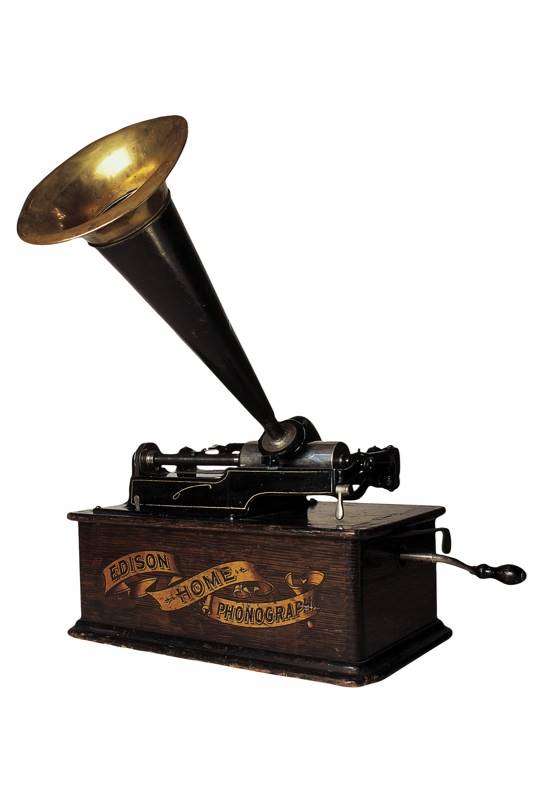History of Phonograph - First Phonograph
As the middle of 19th century enabled the inventors to use new and exciting technologies, the field of sound waves science reached new heights with the discovery of inventor Édouard-Léon Scott de Martinville' sphonautograph. Even though this simple sound recording machine never managed to reach financial and commercial success, it paved a way for future inventors to create technologies that would forever change the way we consume music and entire music making industry. The two most important inventors that are responsible for this incredible change were two telephone competitors from United States of America - Thomas Alva Edison and Alexander Graham Bell.
Invention of first phonograph came from the efforts of Thomas Edison to improve his work in telegraphy and telephony. His driving force for this invention came from the belief that there is a way for creating machine that would easily repeat transmission or telegraph message. For this purpose, Edison focused his work on capturing one passage of Morse code on a spool of paper, and soon he started devising a plan for repeating similar feat for telephone. To capture human voice successfully, he used the concept that was introduced by Scott de Martinville and improved it greatly. He knew that sound can be captured by artificial diaphragm on a physical medium, but he needed a way to reproduce sound from those recordings. For that purposes he used paraffin paper and later on spinning tin foil wrapped cylinder. This recording medium enabled the reading pin to transfer previously recorded vibrations back to the diaphragm where they will be reconstructed into sound.

With the help of mechanic John Kreusi, Thomas awarded with patent that specified method of recording sound by embossing sound vibrations of tin-Edison managed to produce his phonograph prototype in autumn of 1877. With ability to both record and reproduce sound, Edison was confident that his newest invention will be successful. First public demonstration of phonograph was performed on December 22 1877, and in following February Edison was foil-covered cylinders.
Sadly, by that time Edison became involved in other projects (most notably 5 year-long development of New York City's electric light and power system) that prevented him to continue refining his phonograph designs which received some critics by the users, especially tinfoil recording medium with was very fragile and hard to use. Solution for those problems came from the Volta Laboratory which was owned by Alexander Graham Bell, fierce competitor of Edison in the area of telephony. His solution was to use sharp recording stylus to engrave the vibrations of the sound to the wax cylinder. Use of wax greatly improved the durability and use of recording, leading to the adoption of wax based "graphophone" patent in February of 1886. In next year Bell's Volta Graphophone Company from Virginia and American Graphophone Company from Philadelphia merged into one company, which would later evolve into successful music company Columbia Records.
In the early years of graphophone it found popularity only as dictating machines, but at the end of 1889 Louis Glass of Pacific Phonograph Company would popularize them across entire US by introduction of nickel-in-the-slot 'entertainment' cylinders.
The introduction of grapophones into popular culture enabled substantial growth of music industry and voice recording, but the true mass market success came with the introduction of disc based gramophone records. They did not enabled any better sound than Bell's cylinders, but the ease of manufacture enabled them to become dominant force of music recording and reproducing for decades to come.
